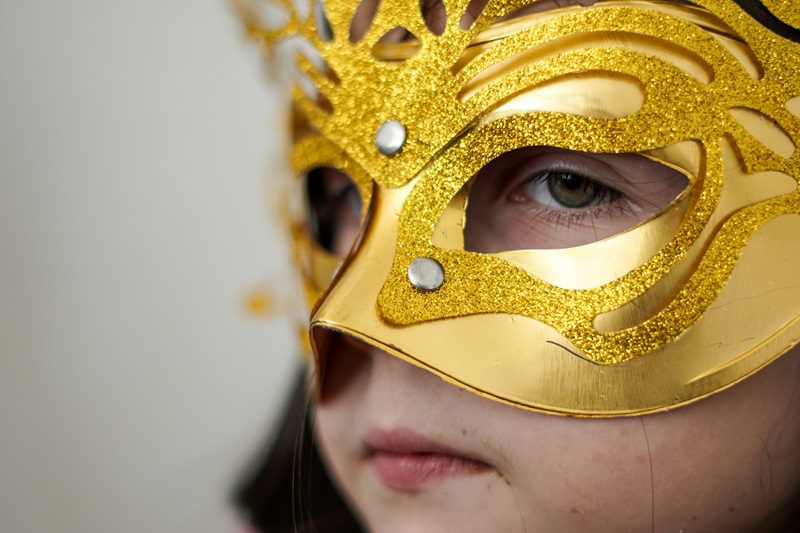Behind the mask: Supporting autistic students in primary school
Written by: Alison Eason

7 min read
ALISON EASON, HEAD OF ADDITIONALLY RESOURCED PROVISION (ARP), CHALGROVE PRIMARY SCHOOL, UK
The typical primary school classroom, which is designed to stimulate children’s senses, may be overwhelming for an autistic child, who processes senses in a different way from their peers. Even the day-to-day sensory information that we routinely process, such as cooking smells wafting in through the window or the sudden scrape of a chair being pulled away from a desk, can cause stress, anxiety and even physical pain (National Autistic Society, nd).
Atypical sensory-based behaviours are a common feature of autism spectrum disorders (ASD) (Marco et al., 2011), yet some autistic children feel the need to hide the fact that they are uncomfortable in the classroom by camouflaging their autistic traits. While masking can help a child to feel safe from bullying, misunderstanding or being considered somehow different, this act of self-preservation takes a toll on self-esteem and self-identity, and
Join us or sign in now to view the rest of this page
You're viewing this site as a guest, which only allows you to view a limited amount of content.
To view this page and get access to all our resources, join the Chartered College of Teaching (it's free for trainee teachers and half price for ECTs) or log in if you're already a member.
- Autism Awareness Centre (2022) What is autistic masking? Available at: https://autismawarenesscentre.com/what-is-autistic-masking (accessed 30 August 2023).
- Autism Education Trust (AET) (2021) Promoting autism inclusive attitudes. Available at: www.autismeducationtrust.org.uk/sites/default/files/2021-09/aet_promoting-autism-inclusive-attitudes.pdf (accessed 30 August 2023).
- Autism Education Trust (AET) (2023) Autism training and development. Available at: www.autismeducationtrust.org.uk/autism-training (accessed 30 August 2023).
- Healthline (2019) Stimming: Causes and management. Available at: www.healthline.com/health/autism/stimming (accessed 20 August 2023).
- Makaton (2023) Help with autism and communication. Available at: https://makaton.org/TMC/TMC/About_Makaton/Help_with_autism_and_communication.aspx?gclid=Cj0KCQjw3JanBhCPARIsAJpXTx4QGDEn1kB9zjWh40SiG5-au_FNbVk-aGcecDq_aS2KzmzNTJndrWsaAhAhEALw_wcB (accessed 20 November 2023).
- Marco EJ, Hinkley LB, Hill SS et al. (2011) Sensory processing in autism: A review of neurophysiologic findings. Pediatric Research 69: 48–54.
- Morin A (2021) Sensory seeking and sensory avoiding: What you need to know. Understood. Available at: www.understood.org/en/articles/sensory-seeking-and-sensory-avoiding-what-you-need-to-know (accessed 23 August 2023).
- National Autistic Society (nd) Sensory differences – a guide for all audiences. Available at: www.autism.org.uk/advice-and-guidance/topics/sensory-differences/sensory-differences/all-audiences#:~:text=Sometimes%20an%20autistic%20person%20may,anxiety%2C%20and%20possibly%20physical%20pain (accessed 23 August 2023).
- NHS Scotland (2022) Children and young people’s occupational therapy service sensory checklist. Available at: www.nhstaysidecdn.scot.nhs.uk/NHSTaysideWeb/idcplg?IdcService=GET_SECURE_FILE&Rendition=web&RevisionSelectionMethod=LatestReleased&noSaveAs=1&dDocName=prod_247894 (accessed 23 August 2023).
- The Autism Page (2021) Sensory differences. Available at: www.theautismpage.com/sensory-homepage (accessed 23 August 2023).
- The Autism Page (2023) How to write and use social stories. Available at: www.theautismpage.com/social-stories (accessed 20 November 2023).
- Widgit (2023) Using symbols to support autism teaching. Available at: www.widgit.com/about-symbols/asd-teaching.htm (accessed 20 November 2023).
5
1
vote
Please Rate this content
Please login to comment
0 Comments
Oldest
Newest
Most Voted
Inline Feedbacks
View all comments










